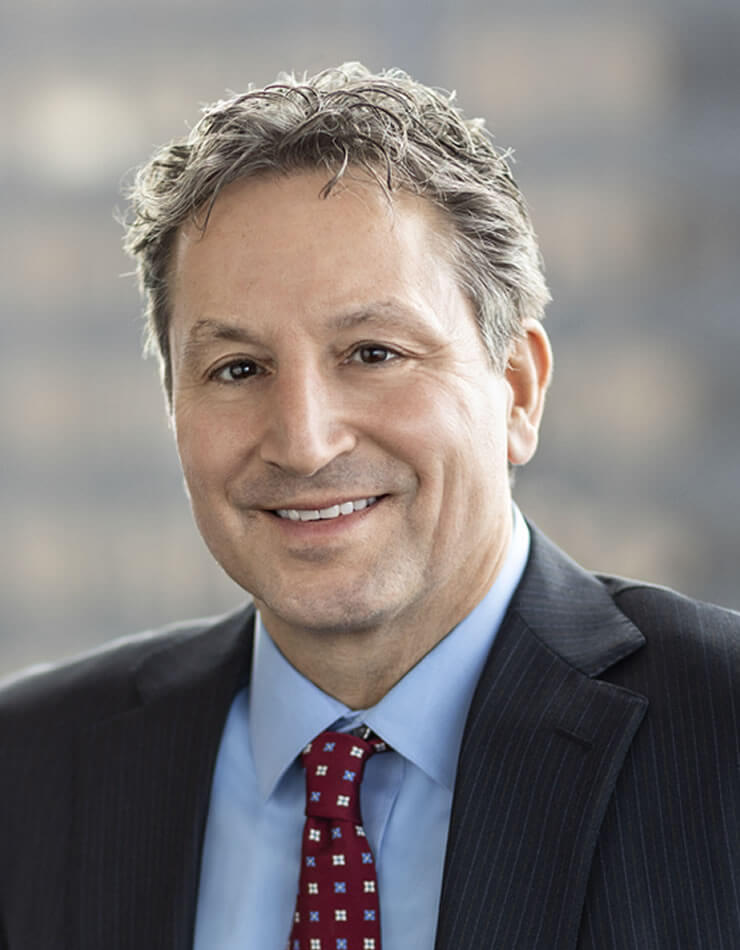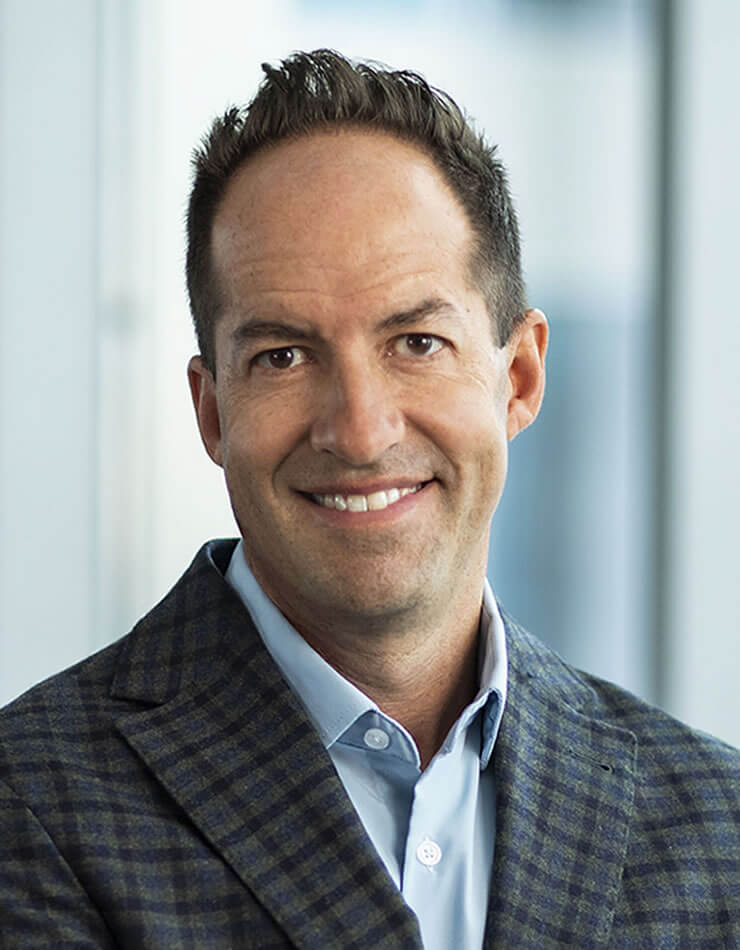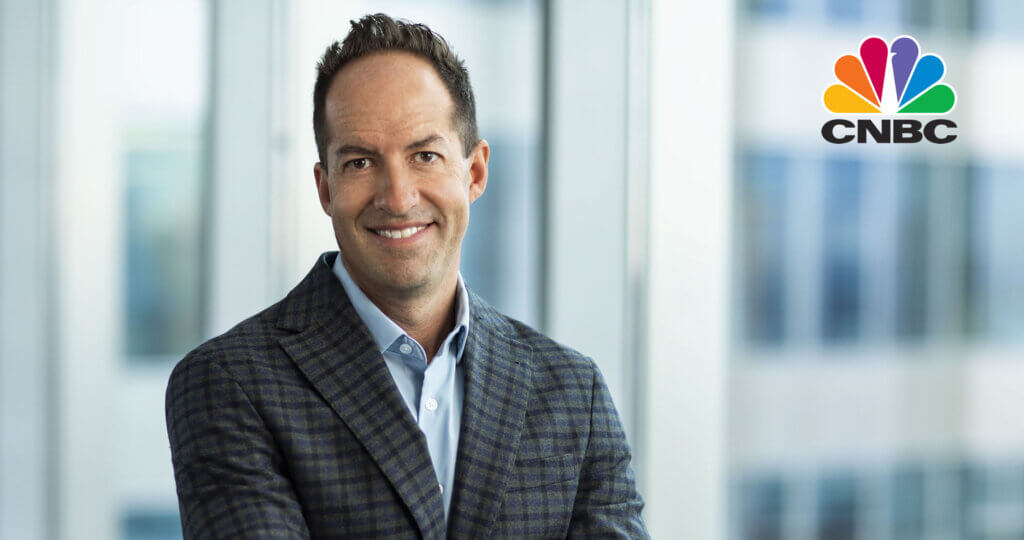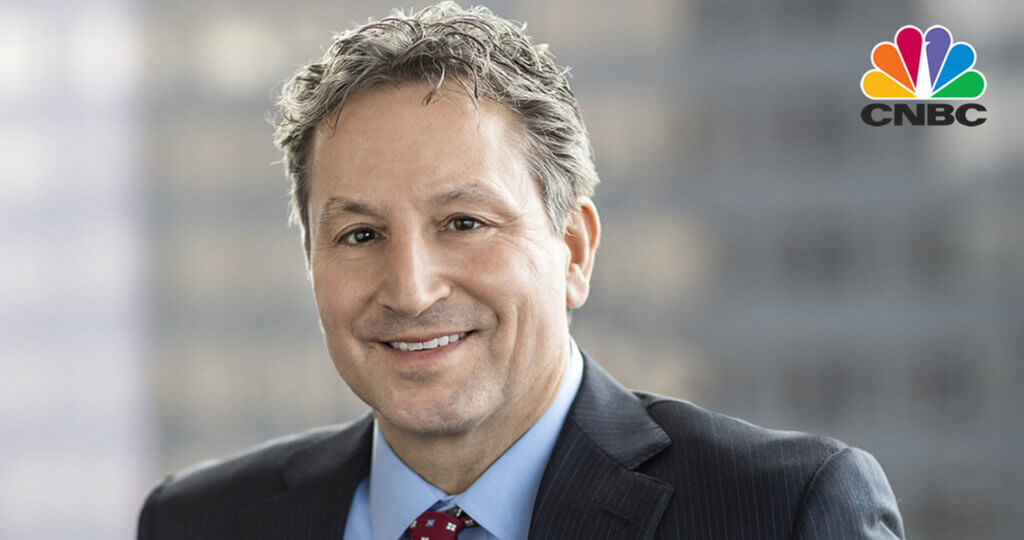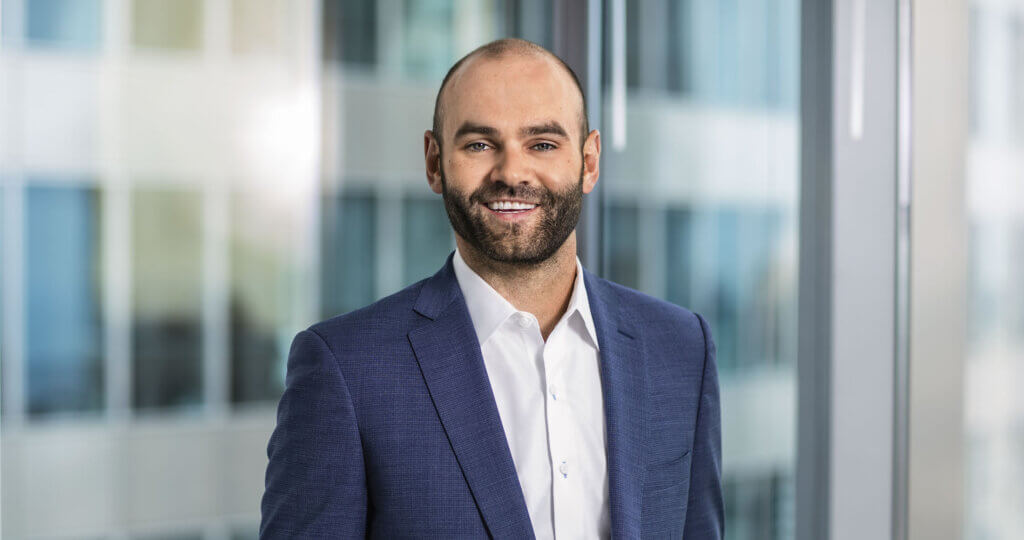Oakmark Global Fund – Investor Class
Average Annual Total Returns 06/30/22
Since Inception 08/04/99 9.03%
10-year 8.17%
5-year 4.47%
1-year -18.81%
3-month -14.46%
Gross Expense Ratio: 1.15%
Net Expense Ratio: 1.13%
Expense ratios are based on estimated amounts for the current fiscal year; actual expenses may vary.
The net expense ratio reflects a contractual advisory fee waiver agreement through January 27, 2023.
Past performance is no guarantee of future results. The performance data quoted represents past performance. Current performance may be lower or higher than the performance data quoted. The investment return and principal value vary so that an investor’s shares when redeemed may be worth more or less than the original cost. To obtain the most recent month-end performance data, view it here.
Rising Interest Rates Change the Narrative
Last fall, The Economist published a list of corporate CEOs ranked by the increase in their firm’s market capitalization during their tenure. As anyone who has invested in equities over the past decade would expect, CEOs from American technology companies took all of the list’s top spots. As we wrote one year ago, “Today investors appear to believe that technology will continue its domination indefinitely, but the historical record suggests that impermanence is the better expectation…” and the recent quarter’s price action amply validated that historical record. At the time of The Economist article, we wrote about the significant outperformance of U.S. equities versus international markets. Of course, the U.S. tech darlings’ extraordinary returns explained much of that difference, and that trend changed in the recent quarter as the technology-heavy U.S. stock market languished while international equities outperformed.
We also noted, “We believe that a material increase in interest rates could favor value equities but could also cause market turbulence.” Central banks from Australia to Zimbabwe raised rates in the recent quarter in their effort to rein in price inflation, and this action stimulated significant turbulence in stocks, bonds, currencies and cryptocurrencies. The weakness in cryptocurrencies has been especially interesting as their advocates had argued that they would be an uncorrelated asset class in difficult times.
Of course, the recent quarter experienced many notable developments aside from financial market action. Sadly, the Russia/Ukraine war continues with no end in sight. Covid-19 continues to plague humanity and disrupt the Chinese economy, although mortality rates have plummeted as the virus evolves and vaccine distribution continues. Price inflation in the real economy reached levels not seen since the 1980s, provoking the global central bank activity mentioned above. We note with interest, however, that late in the quarter prices of commodities began to decline. In particular, copper, sometimes said to have a “Ph.D. in economics” because of its ability to predict turning points in the global economy, suddenly declined in price back to early 2021 levels. Every quarter, we speak to many corporate executives, and with few exceptions, during the past quarter, they indicated decent business conditions for their enterprises. Nevertheless, they are generally apprehensive due to tightening financial conditions. In the U.S., the Federal Reserve is attempting to produce an economic “soft landing,” although 1994 was the last time it successfully achieved such a feat.
We are always vigilant for changes in the economic environment. Currently, we believe that the developing economic transition may have diminished, but this has not critically impaired the ability of the Fund’s holdings to produce positive economic outcomes. We expect the Fund’s holdings to continue to generate free cash flow, invest in their businesses, pay dividends, repurchase stock and, in general, grow their intrinsic value per share. Market prices are far more volatile than intrinsic value, and it is our job to prey upon this volatility. As noted below, we have been active in the Fund, reallocating from issues that have outperformed to new opportunities trading for steeper discounts to intrinsic value. As always, we will seek out value wherever it is available in the prevailing environment.
Quarter Review
Stock markets declined worldwide in the June quarter. As referenced above, international markets bested the U.S.,1 which entered a bear market (down 20% or more from the most recent high) in the period. Although superior performance in the Fund’s international holdings enabled the Fund to outperform in the quarter, we recognize that this is a hollow victory. The Fund’s loss was -14.5 %, which compares to the MSCI World Index (Net)’s -16.2% return and the Lipper Global Fund Index’s -15.6%. For the first six months of 2021, the returns are -19.2% for the Fund, -20.5% for the MSCI World Index and -22.5% for the Lipper Global Fund Index. Since its inception in 1999, the Fund’s compound annual rate of return has been 9.0%, which compares to 5.2% for the MSCI World Index and 5.3% for the Lipper Global Fund Index.
In the quarter, the Netherlands, South Africa and China contributed most to return. The outcomes from the Netherlands and South Africa were due to strong returns from a single entity that has divided its interests and domicile between the two countries. The U.S., U.K. and Switzerland detracted most from returns, reflecting their heavy weights in the portfolio in a down market. Alibaba (China), Prosus (Netherlands), Naspers (South Africa), Humana (U.S.) and Arconic (U.S.) were the biggest positive contributors for the quarter. Alphabet (U.S.), Tenet Healthcare (U.S.), General Motors (U.S.), Bank of America (U.S.) and Credit Suisse (Switzerland) were the largest detractors.
For the calendar six months, South Africa, Australia and Japan were the countries that contributed most to return. Once again, the U.S., U.K. and Switzerland were the largest detractors. The stocks that contributed most to return were Bayer (Germany), Alibaba, Naspers, Glencore (Switzerland) and NOV (U.S.). The issues that detracted most from return were General Motors, Alphabet, Tenet Healthcare, TE Connectivity (Switzerland) and Credit Suisse.
Transaction Activity
We were active in the quarter. We initiated positions in companies whose shares had declined relative to our buy price, added to existing holdings whose prices became more attractive and sold shares of holdings that became relatively expensive. We also worked to improve the Fund’s tax efficiency. Our activity did not change the U.S./international split meaningfully; the 1% decline in the U.S. share resulted from poor relative performance. We initiated four new holdings—Cushman & Wakefield, Kering, Parker Hannifin and Richemont—and sold three, Envista Holdings, General Dynamics and Iveco Group.
U.S.-domiciled Cushman & Wakefield is one of the largest companies in the commercial real estate brokerage industry, a sector that is consolidating as scale has differentiated large competitors from their smaller peers. This has enabled large industry participants, such as Cushman & Wakefield, to gain significant market share in transactional business lines like leasing brokerage and capital markets while simultaneously building significant outsourcing businesses with contractual revenue streams. We expect the company to continue growing its market share over time as economies of scale also drive gradual improvement in profit margins. Despite this strong outlook, Cushman & Wakefield is trading at a mid-single-digit multiple of current year earnings—a material discount to the broad market and to its large brokerage peers. We see this as an opportunity to own a high-quality, well-managed company at a bargain price.
French consumer discretionary company Kering is one of the world’s largest luxury groups. Its brands include Gucci, Saint Laurent, Bottega Veneta, Balenciaga and Alexander McQueen, among others. The personal luxury goods market has attractive structural growth prospects due to globalization, increasing wealth and social media. Moreover, large luxury houses, such as Kering, benefit from significant scale advantages that have resulted in both market share gains and superior levels of profitability compared to their smaller peers. While Gucci’s rate of growth has slowed more recently on the back of Covid-19-related lockdowns as well as other short-term factors, we believe the brand remains very well positioned for attractive levels of growth and returns over the long term. In addition, we appreciate Kering’s excellent track record of diversifying its exposure to Gucci and leveraging its scale for the benefit of its smaller brands. Overall, we find that the company trades at a compelling valuation given its unusually positive risk/reward proposition and believe that it is a structurally growing, high-quality luxury asset with an impressive management track record.
Parker Hannifin, a U.S. company that specializes in motion and control technologies, is suffering from what we believe are investor misunderstandings and misjudgments, despite the efforts of the company’s unusually strong management team. In our opinion, since his promotion in 2015, CEO Thomas Williams has vastly improved operations and shifted the product portfolio to longer cycled, higher growth, higher margin and higher return end markets. The results are impressive. Margins, returns and earnings have increased substantially. With the expected closing of the Meggitt acquisition in the September quarter, the highly depressed aerospace segment will be its largest end market. We anticipate a rebound in aerospace revenue, which—combined with the company’s strong position in attractive businesses, including clean technologies and factory automation—should accelerate revenue growth. Parker Hannifin trades at a discount to other high-quality industrials, which we believe is unwarranted since its growth and returns should be similar or better. At a low-teens multiple of next year’s normalized cash earnings, Parker Hannifin is an attractive investment, in our view.
Based in Switzerland, Richemont is one of the world’s largest luxury goods firms and maintains a portfolio of brands that range from Cartier and Van Cleef & Arpels in jewelry to Piaget and Baume & Mercier in watches to Dunhill in leather goods and Montblanc in high-performance pens. In our view, this is one of the most attractive portfolios of luxury goods brands in the world. We find the company’s exposure to the jewelry market via the largest (Cartier) and third-largest (Van Cleef & Arpels) brands especially appealing, given our expectations for the category to achieve strong levels of growth and profitability. Moreover, demand for luxury goods is closely tied to wealth creation, and considering that the number of new millionaires is growing by about 6% globally per year, we are pleased with Richemont’s exposure to this fast-growing demographic. Finally, Richemont’s management team has a strong track record of impressive decision-making and creating long-term value for shareholders.
We sold our position in Iveco Group (Italy), in favor of names that, in our opinion, offer a more favorable risk/return profile. Iveco Group’s arrival in the Fund stemmed from CNH Industrial’s demerger of its trucks and commercial vehicles business in early January. We continue to hold CNH Industrial as we believe it holds an attractive valuation at its current price. Envista Holdings (U.S.) is a supplier of equipment and consumables to the dental/orthodontic industry. After plummeting in the early days of the pandemic, its share price performed very well as dental offices reopened, and we completed sales of our shares in the quarter. Finally, General Dynamics’ defense business enabled the stock to resist the bear market’s downward pressure. We eliminated the position to fund more attractive holdings.
Currency Hedges
We defensively hedge a portion of the Fund’s exposure to currencies when we believe they are overvalued versus the U.S. dollar. During the quarter, we closed our Swiss franc hedge at maturity because we believe the currency to be fairly valued. As of quarter end, the Fund has no currencies hedged.
Thank you for being our partners in the Oakmark Global Fund. We invite you to send us your comments or questions.
1The representative index for the US market is the S&P 500 Total Return Index.
The securities mentioned above comprise the following percentages of the Oakmark Global Fund’s total net assets as of 06/30/2022: Alibaba Group 3.9%, Alphabet Cl A 6.1%, Arconic 0.7%, Bank of America 2.9%, Bayer 2.5%, CNH Industrial 1.7%, Credit Suisse Group 3.0%, Cushman & Wakefield 0.6%, Envista Holdings 0%, General Dynamics 0%, General Motors 3.4%, Glencore 1.9%, Humana 2.0%, Iveco Group 0%, Kering 0.9%, Meggitt 0%, Naspers 0%, NOV 1.9%, Parker-Hannifin 1.3%, Prosus 4.6%, Richemont 0.1%, TE Connectivity 4.6% and Tenet Healthcare 2.6% Portfolio holdings are subject to change without notice and are not intended as recommendations of individual stocks.
Access the full list of holdings for the Oakmark Global Fund here.
The S&P 500 Total Return Index is a float-adjusted, capitalization-weighted index of 500 U.S. large-capitalization stocks representing all major industries. It is a widely recognized index of broad, U.S. equity market performance. Returns reflect the reinvestment of dividends. This index is unmanaged and investors cannot invest directly in this index.
The MSCI World Index (Net) is a free float-adjusted, market capitalization-weighted index that is designed to measure the global equity market performance of developed markets. The index covers approximately 85% of the free float-adjusted market capitalization in each country. This benchmark calculates reinvested dividends net of withholding taxes. This index is unmanaged and investors cannot invest directly in this index.
The Lipper Global Fund Index measures the equal-weighted performance of the 30 largest global equity funds as defined by Lipper. This index is unmanaged and investors cannot invest directly in this index.
The Fund’s portfolio tends to be invested in a relatively small number of stocks. As a result, the appreciation or depreciation of any one security held by the Fund will have a greater impact on the Fund’s net asset value than it would if the Fund invested in a larger number of securities. Although that strategy has the potential to generate attractive returns over time, it also increases the Fund’s volatility.
Investing in foreign securities presents risks that in some ways may be greater than in U.S. investments. Those risks include: currency fluctuation; different regulation, accounting standards, trading practices and levels of available information; generally higher transaction costs; and political risks.
The compound return is the rate of return, usually expressed as a percentage that represents the cumulative effect that a series of gains or losses has on an original amount of capital over a period of time. Compound returns are usually expressed in annual terms, meaning that the percentage number that is reported represents the annualized rate at which capital has compounded over time.
The percentages of hedge exposure of each foreign currency are calculated by dividing the market value of all same-currency forward contracts by the market value of the underlying equity exposure to that currency.
The information, data, analyses, and opinions presented herein (including current investment themes, the portfolio managers’ research and investment process, and portfolio characteristics) are for informational purposes only and represent the investments and views of the portfolio managers and Harris Associates L.P. as of the date written and are subject to change and may change based on market and other conditions and without notice. This content is not a recommendation of or an offer to buy or sell a security and is not warranted to be correct, complete or accurate.
Certain comments herein are based on current expectations and are considered “forward-looking statements”. These forward looking statements reflect assumptions and analyses made by the portfolio managers and Harris Associates L.P. based on their experience and perception of historical trends, current conditions, expected future developments, and other factors they believe are relevant. Actual future results are subject to a number of investment and other risks and may prove to be different from expectations. Readers are cautioned not to place undue reliance on the forward-looking statements.
All information provided is as of 06/30/2022 unless otherwise specified.
